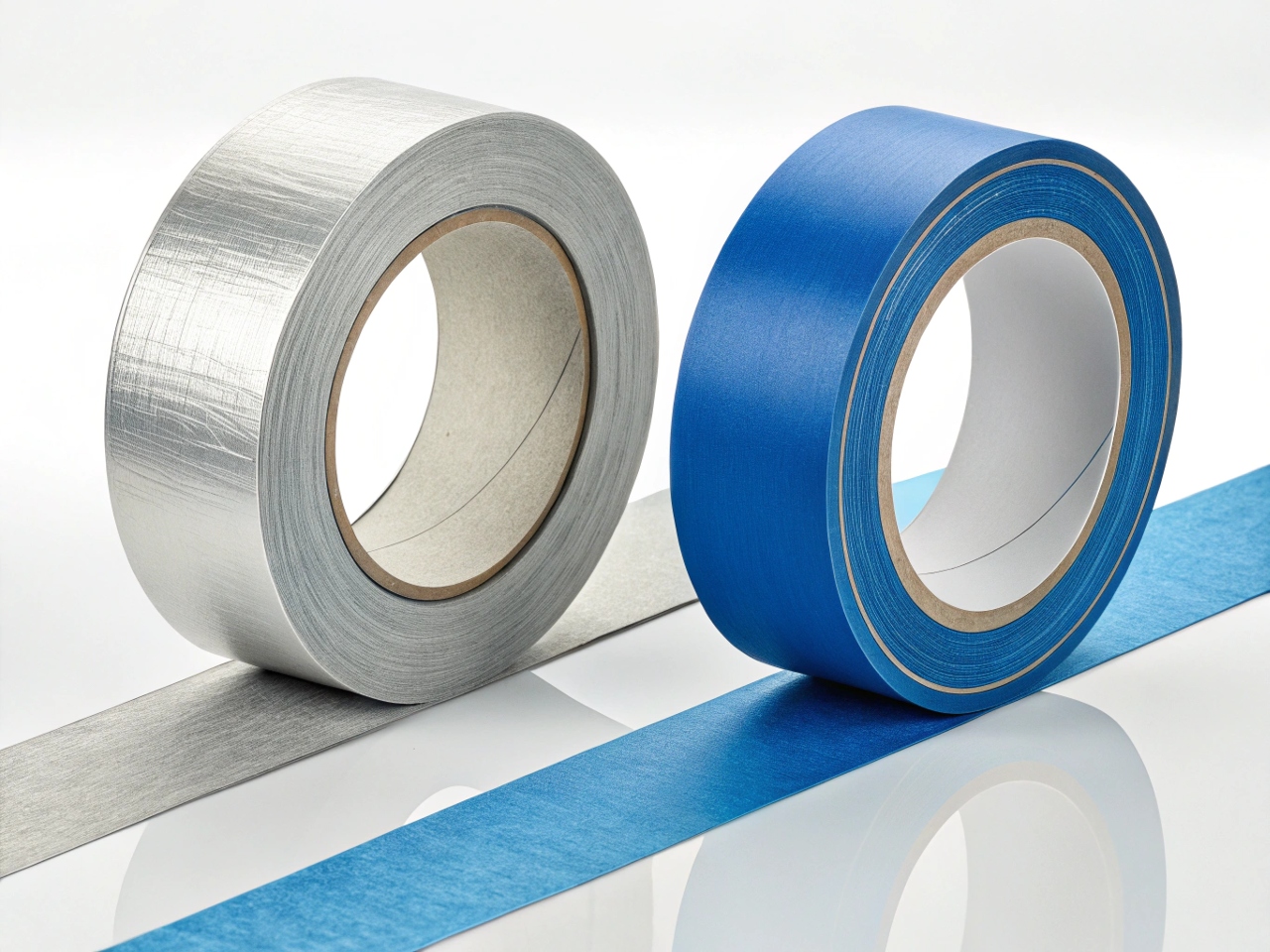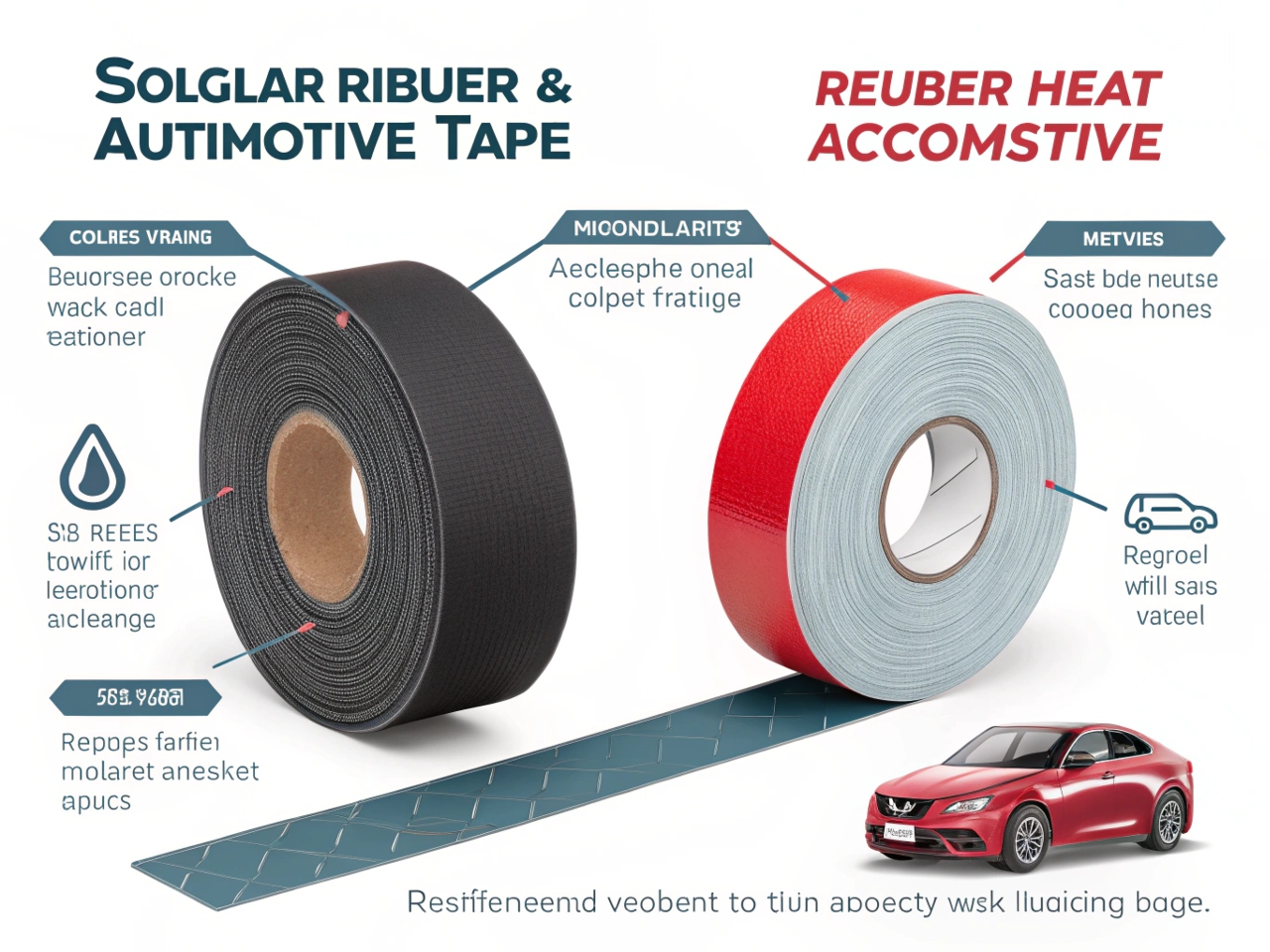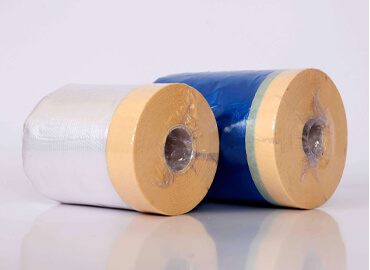Choosing the wrong tape can turn your dream paint job into a sticky, frustrating nightmare. It’s a costly mistake.
Automotive masking tape is specifically designed to withstand high temperatures, resist solvents, and provide clean removal without leaving residue or damaging paint, unlike regular masking tape,Ordinary tape tends to retain glue and is not resistant to high temperatures and will melt and stick to the car.

But that’s just scratching the surface. Let’s explore why the right tape is crucial for a flawless finish.
What is the difference between masking tape and automotive masking tape?
Imagine spending hours prepping your car, only to have the tape fail, ruining all your work. The frustration is very real.
The key differences lie in the adhesive and backing material. Automotive tape uses a special rubber-based adhesive that resists heat and solvents and a stronger backing that won’t tear easily.

adhesive and backing material
Dive deeper Paragraph.
Automotive masking tape and regular masking tape might look similar, but their performance in a car painting environment is worlds apart. Let’s break it down:
Heat Resistance
- Regular Masking Tape: Designed for room temperature applications. The adhesive can soften and fail under the heat of paint curing lamps or even direct sunlight.
- Automotive Masking Tape: Formulated to withstand high temperatures (often up to 250°F or higher) without the adhesive breaking down or transferring to the surface.
Solvent Resistance
- Regular Masking Tape: The adhesive can be dissolved by the solvents in automotive paints, leading to residue and paint bleed.
- Automotive Masking Tape: Uses a rubber-based adhesive that is resistant to common automotive paint solvents, ensuring clean lines and preventing paint seepage.
Adhesion and Removal
- Regular Masking Tape: Can leave a sticky residue or even peel off paint when removed, especially after exposure to heat or chemicals.
- Automotive Masking Tape: Designed for clean removal without leaving residue or damaging the underlying paint, even after being subjected to high temperatures and solvents.
Backing Material
- Regular Masking Tape: Typically uses a crepe paper backing that can tear easily and is not very conformable.
- Automotive Masking Tape: Uses a stronger, more flexible backing (often crepe paper or a thin plastic film) that can conform to curves and contours without tearing.
| Feature | Regular Masking Tape | Automotive Masking Tape |
|---|---|---|
| Heat Resistance | Low | High (up to 250°F or higher) |
| Solvent Resistance | Low | High |
| Adhesive | General purpose | Rubber-based, solvent-resistant |
| Backing Material | Crepe paper | Crepe paper or thin plastic film, stronger |
| Removal | Can leave residue or damage paint | Clean removal without residue |
| Conformability | Low | High |
| Cost | Lower | Higher |
What tape won’t ruin car paint?
Using the wrong tape can mean residue, paint peeling, or bleed-through. It’s a shortcut that always backfires.
Specifically designed automotive masking tape, with its heat-resistant adhesive and strong backing, is the only tape that guarantees it won’t damage your car’s paint job.

tape won’t ruin car paint
Dive deeper Paragraph.
Protecting your car’s paint during a refinishing project is paramount. Here’s a closer look at why automotive masking tape is the safe choice:
Residue-Free Removal
- The primary culprit in paint damage from tape is adhesive residue. Automotive masking tape’s specialized adhesive is formulated to release cleanly from the surface, even after exposure to heat and solvents. This eliminates the risk of sticky residue that can attract dust, require aggressive cleaning (potentially scratching the paint), or interfere with subsequent coats.
Paint Adhesion Integrity
- Regular masking tape can sometimes bond too strongly to the existing paint, especially if it’s been exposed to heat. When you remove the tape, it can pull off flakes or sections of the original paint, creating a bigger problem than you started with. Automotive tape’s adhesive is strong enough to hold, but not so strong that it damages the underlying finish.
Bleed-Through Prevention
- Paint bleed-through occurs when paint seeps under the edge of the tape, creating messy, uneven lines. Automotive masking tape’s strong backing and conformability help it create a tight seal against the surface, preventing paint from creeping underneath. The solvent-resistant adhesive also ensures that the paint doesn’t dissolve the adhesive and sneak through.
Material Compatibility
- Automotive paints, primers, and clear coats are chemically complex. Automotive masking tape is designed to be compatible with these materials, meaning it won’t react with them in a way that could cause discoloration, bubbling, or other surface defects.
- In my time working for a large car company I once saw the wrong tape used and a great deal of cost and time was wasted to rectify the problem.
What is the best masking tape for automotive painting?
Choosing any old tape can create more work and headaches in the long run. It’s not worth the risk.
The best masking tape for automotive painting is one that balances heat resistance, solvent resistance, conformability, and clean removal. Look for tapes specifically labeled “automotive” and check their temperature ratings.

best masking tape for automotive painting
Dive deeper Paragraph.
There isn’t a single “best” tape, as the ideal choice depends on the specific application. However, here are some key factors to consider:
Temperature Rating
- Different tapes have different temperature ratings. If you’re using heat lamps to cure the paint, make sure the tape can withstand that temperature. Check the manufacturer’s specifications.
Conformability
- If you’re masking curved surfaces or intricate details, you need a tape that can bend and conform without lifting or wrinkling. Look for tapes with a flexible backing, such as fine crepe paper or a thin plastic film.
Adhesion Level
- The adhesion level needs to be strong enough to hold the tape in place, but not so strong that it damages the paint upon removal. Different tapes have different adhesion levels, so choose one that’s appropriate for your specific paint system and surface.
Application Time
- Some tapes are designed for short-term masking, while others can be left on for longer periods. If you’re doing a multi-stage paint job, you might need a tape that can be left on for several days without leaving residue.
Specific Use Cases
- Fine Line Tape: For creating very sharp, precise lines, there are specialized fine line tapes (often made of plastic film) that offer minimal paint bleed-through.
- High-Temperature Tape: For extreme heat situations, such as baking in a paint booth, you’ll need a tape with a very high temperature rating.
- General Purpose Automotive Tape: For most masking tasks, a good quality general-purpose automotive tape will suffice.
Conclusion
Choosing the right masking tape is essential for a professional-looking paint job. Automotive masking tape is a must, it’s not worth the risk, to avoid costly mistakes.


